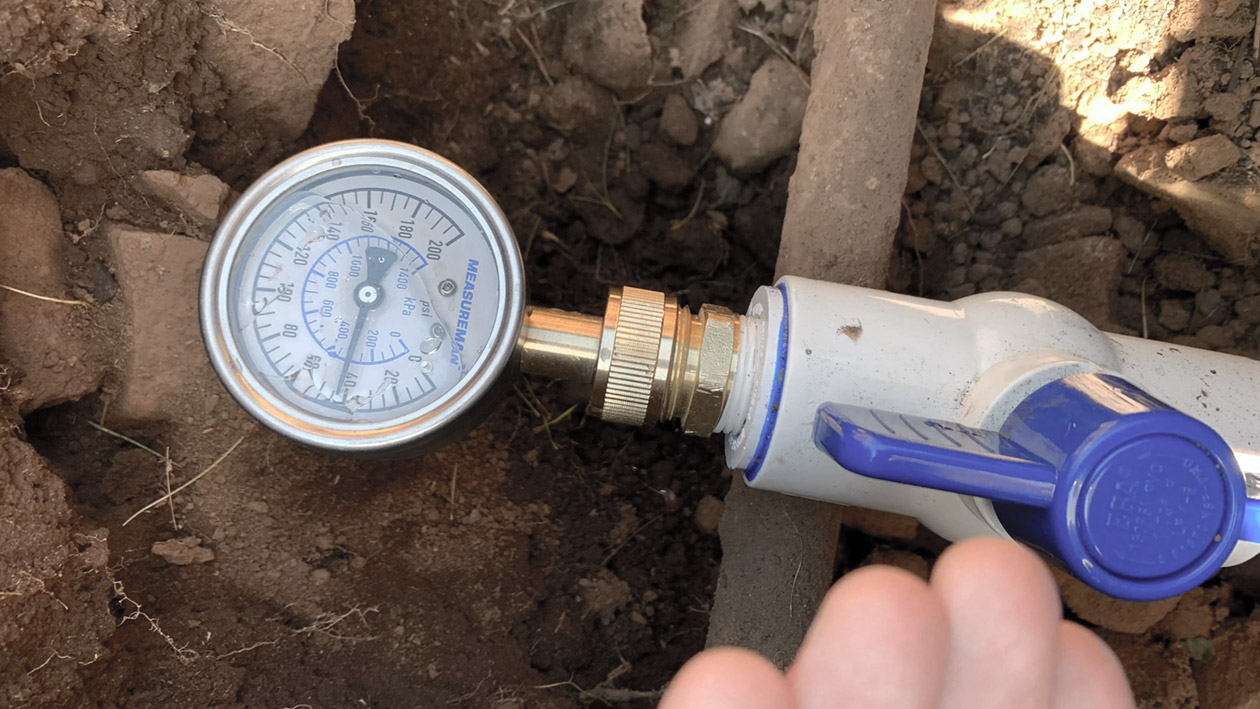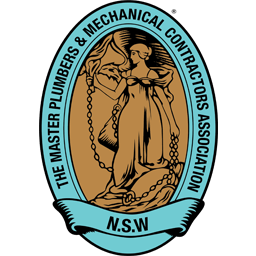Water pressure is the force exerted by water moving through pipes and systems, typically measured in pounds per square inch (PSI), kilopascals (kPa), or bars. Residential water pressure ranges typically between 40-80 PSI (276-552 kPa), with 50-60 PSI (345-414 kPa) considered ideal for most household applications. Too little pressure causes weak flow and appliance performance issues, while excessive pressure can damage pipes and fixtures, potentially causing costly leaks.
The three main methods to measure water pressure include:
- Using a pressure gauge on an outdoor spigot (most accurate and recommended)
- Performing a DIY flow rate test with a container and timer (simplest method)
- Installing digital pressure sensors for continuous monitoring (advanced option)
Each method offers different advantages depending on your specific needs, technical knowledge, and the purpose of your measurement.
Measurement Methods
Using a Pressure Gauge (Primary Method)
The most reliable method for homeowners to measure water pressure involves using a dedicated pressure gauge attached to an outdoor water spigot. This straightforward approach provides accurate readings of your home’s incoming water pressure with minimal equipment.
Materials needed:
- Water pressure gauge (available at Bunnings)
- Plumber’s tape (often included with gauges)
Step-by-step procedure:
- Ensure all water use in your house is turned off for an accurate static pressure reading
- Locate an outdoor water spigot/hose bib
- Remove any attached hose
- Apply plumber’s tape to the threads (prevents leaks and ensures accurate readings)
- Attach the pressure gauge by screwing it onto the spigot
- Fully open the spigot valve
- Observe the pressure reading on the gauge face
Quality pressure gauges like the Holman water pressure gauge display readings in both kPa and PSI, with maximum ranges up to 1000 kPa (150 PSI), providing comprehensive diagnostic information. For more complete analysis, take multiple readings under different conditions to establish a pressure profile. Record both static pressure (when no water is being used) and dynamic pressure (during household water usage) to identify potential pressure drop issues.
DIY Flow Rate Test (Alternative Method)
When a pressure gauge isn’t readily available, a simple DIY water flow test can provide indirect insights into your water pressure conditions. While this method measures volume rather than pressure directly, the two are closely related in typical residential systems.
Materials needed:
- Container of known volume (1 or 2-litre jug)
- Stopwatch or timer
- Calculator
Step-by-step procedure:
- Position your measuring container under a fully-opened bathroom tap or shower
- Time how long it takes to collect water for exactly six seconds
- Measure the volume captured (in litres)
- Multiply that figure by 10 to calculate your flow rate in litres per minute (LPM)
Interpretation guide:
- Below 10 LPM: Low pressure – may affect appliance performance
- 10-15 LPM: Acceptable pressure
- Above 15 LPM: Good pressure
An alternative approach called the “Bucket Test” follows similar principles but uses larger containers and different time intervals, such as measuring how long it takes to fill a 9-liter bucket. The Sydney Water meter reading test suggests that a flow rate of approximately 18 L/min corresponds to 15 meters of head pressure, providing another benchmark for evaluation.
Using Digital Sensors with Microcontrollers (Advanced Method)
Advanced water pressure monitoring applications benefit from digital sensors integrated with microcontrollers, enabling automated data collection and remote monitoring capabilities. These sophisticated sensors, such as the DFRobot Gravity Analog Water Pressure Sensor, typically feature standardized interfaces like 3-pin connections compatible with Arduino and similar platforms.
Understanding Your Results
Interpreting pressure readings requires understanding what different values mean for your water system. Residential water pressure typically falls between 40-80 PSI (276-552 kPa), with most plumbing professionals recommending 50-60 PSI (345-414 kPa) as ideal. This range ensures sufficient pressure for effective operation of appliances and fixtures while preventing excessive stress on pipes and connections.
Pressure readings below 40 PSI (276 kPa) may indicate issues such as:
- Partially closed main water valve
- Clogged pipes or restrictions
- Pressure regulator failure
- Municipal supply problems
- Elevation issues in multi-story buildings
Readings above 80 PSI (552 kPa) can cause:
- Pipe and fitting damage
- Excessive water consumption
- Appliance damage (particularly washing machines and dishwashers)
- Water hammer (banging pipes)
- Increased likelihood of leaks
Many local water authorities and plumbing codes specify maximum allowable pressures, typically around 80 PSI (552 kPa) for residential systems. When documenting your results, record the date, time, and location of measurement, along with whether the reading was taken during high or low household usage periods. This documentation establishes a baseline for future comparison and helps identify gradual changes that might indicate developing problems.
Types of Water Pressure Measurements
Understanding different types of water pressure measurements provides deeper insights into system performance and helps pinpoint specific issues.
Static pressure is measured when water is not flowing (all taps closed) and represents the maximum pressure in your system. This baseline measurement helps identify the overall supply pressure from your water source. Static pressure is particularly useful for evaluating whether your home receives adequate pressure from the municipal supply or private well.
Dynamic pressure (also called working pressure) measures the force when water is actually flowing through the system. This measurement is always lower than static pressure due to friction losses in pipes and fittings. The difference between static and dynamic pressure can reveal restrictions or inadequate pipe sizing – a significant drop indicates potential problems.
Absolute pressure measures against a perfect vacuum (zero pressure), while gauge pressure measures relative to atmospheric pressure. Most residential measurements use gauge pressure, as it reflects the practical pressure experienced in the system. Differential pressure compares pressure between two points, useful for evaluating pressure drops across filters or identifying blockages.
Understanding the relationship between pressure and flow is critical – while they’re related, they represent different properties. Pressure (force) and flow (volume per time) affect each other, and restrictions can create situations where you have high pressure but poor flow, or adequate flow but insufficient pressure to properly operate fixtures.
Water Pressure Fundamentals
Water pressure physically represents the force exerted by water molecules within pipes and systems, measured as force per unit area. In residential systems, this pressure results from a combination of factors, including elevation (gravity), municipal pumping systems, or pressure tanks in well systems.
The relationship between height and pressure is fundamental: each 2.31 feet (0.7 meters) of water column height creates 1 PSI (6.9 kPa) of pressure. This principle explains why upper floors of tall buildings often experience lower pressure than ground floors, as the height reduces the effective pressure at the outlet.
Common pressure measurement units include:
- PSI (Pounds per Square Inch) – common in US and Canada
- Bar – widely used in Europe (1 bar = 14.5 PSI)
- kPa (Kilopascals) – SI unit (100 kPa = 14.5 PSI)
- Meters Head – used in irrigation and pump applications (10 meters head = approximately 1 bar)
The conversion between these units is crucial for technical applications:
- 1 bar = 14.5038 PSI = 100 kPa = 10.2 meters head
- 1 PSI = 0.0689 bar = 6.89 kPa = 0.703 meters head
- 1 kPa = 0.01 bar = 0.145 PSI = 0.102 meters head
Several factors influence residential water pressure, including:
- Municipal supply pressure (set by local water utility)
- Elevation differences between water source and outlet
- Friction losses in pipes (affected by pipe diameter, material, and length)
- Pressure regulating valves (PRVs) that limit incoming pressure
- Water demand within the system (more fixtures in use = lower pressure)
- Mechanical restrictions from valves, bends, or deposits in pipes



